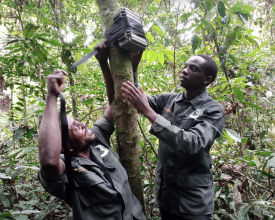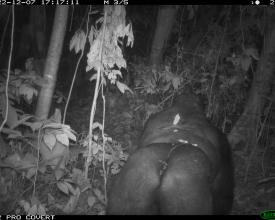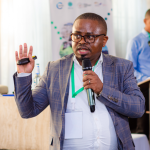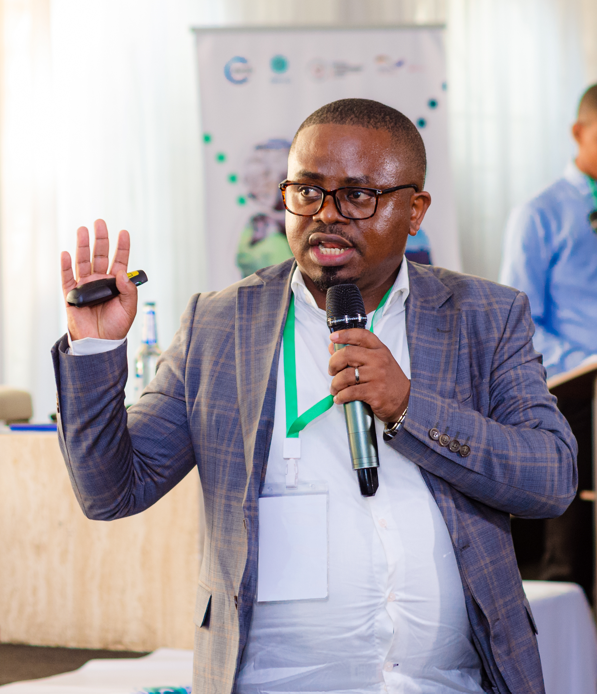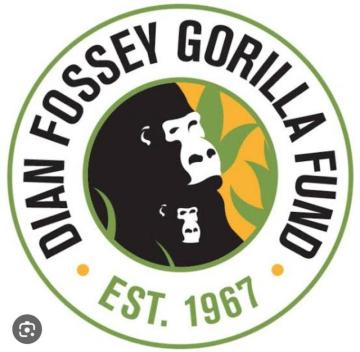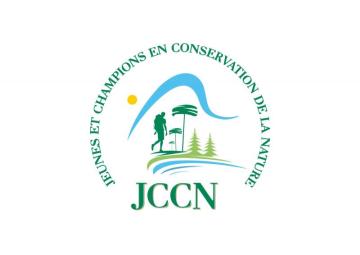
El enfoque de conservación comunitaria en la zona de Nkuba
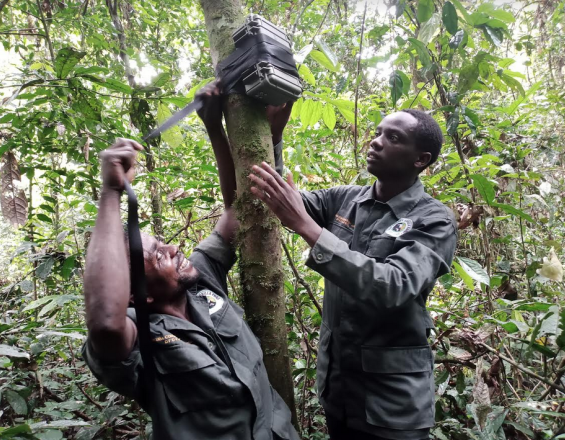
El Área de Conservación de Nkuba (NCA) es una zona de conservación comunitaria situada en la frontera entre la provincia de Kivu del Norte, en el territorio de Walikale, y la provincia de Maniema, en el territorio de Punia, en la República Democrática del Congo. Situada entre dos grandes parques nacionales, el Parque Nacional de Kahuzi-Biega y el Parque Nacional de Maiko, la zona tiene una superficie total estimada de 2.457,9 km2. Creada en 2012, la NCA es una iniciativa centrada principalmente en la investigación científica y la conservación de la naturaleza, especialmente de los gorilas de Grauer, una especie totalmente protegida por la UICN. La zona es, de hecho, un conjunto de iniciativas forestales comunitarias basadas en un método de gestión conocido como entidad de gestión separada confiada al Fondo Dian Fossey para los Gorilas (DFGF) por las comunidades locales por un periodo renovable de 25 años. Diversas formas de apoyo a las comunidades en términos de refuerzo de la resiliencia socioeconómica con vistas a mitigar las amenazas a la biodiversidad.
Contexto
Défis à relever
La iniciativa del área de conservación de Nkuba ha aportado soluciones a los problemas de la caza furtiva, que ponía en peligro la vida de los gorilas de Grauer, y otras amenazas a la biodiversidad como la pesca ilegal mediante envenenamiento.
Ubicación
Procesar
Resumen del proceso
Las distintas partes interesadas participan en la toma de decisiones sobre la gestión de la zona y los beneficiarios de los distintos beneficios. Se reúnen en el Comité de la Zona de Conservación de Nkuba (COCONCA), que incluye, por una parte, al comité de gestión de la zona de conservación y, por otra, a los miembros de la comunidad reunidos en el seno de la UTDPE. La comunidad participa en todas las reuniones destinadas a tomar decisiones sobre la contratación de personal, la fijación de la prima de conservación, la selección de los beneficiarios de la subvención escolar, los tipos de ayuda al desarrollo local, etc., a través de sus representantes en el UTDPE.
Bloques de construcción
Existencia de un memorando de acuerdo que defina los derechos de las partes interesadas
El memorando de entendimiento existente define los derechos de los miembros de la comunidad con respecto a la gestión del sitio. Entre ellos figuran los derechos relativos al acceso a la prima de conservación, las becas escolares, el apoyo a la resiliencia socioeconómica (agricultura, ganadería, piscicultura, etc.), las actividades de campo, el acceso a la zona de usos múltiples, etc.
Factores facilitadores
El respeto de los derechos definidos en el memorando de entendimiento ha propiciado la participación de la comunidad en todas las actividades de conservación iniciadas en la zona.
Lección aprendida
Con el fin de respetar los distintos derechos reconocidos a los miembros de las comunidades locales, se ha creado un Comité de la Zona de Conservación de Nkuba (COCONCA), que reúne a miembros de la comunidad y del comité de gestión de la zona de conservación, con vistas a implicar a todas las partes interesadas en las decisiones relativas a la gestión del lugar.
Colaboración con la Union des Terriens pour le Développement et la Protection de l'Environnement (UTDPE)
La UTDPE es una organización local que reúne a los jefes de las tierras y otras autoridades consuetudinarias que deben participar en las reuniones en las que se toman las decisiones.
Factores facilitadores
La colaboración con la UTDPE en la gestión del yacimiento ha fomentado una forma de gestión participativa en el yacimiento de Nkuba.
Lección aprendida
Los miembros de la UTDPE son también representantes de las distintas familias de titulares de derechos de la zona.
Impactos
La iniciativa del Área de Conservación de Nkuba ha tenido un impacto positivo en la conservación de los gorilas de Grauer y de la biodiversidad en general por parte de las comunidades locales. El apoyo a las comunidades en términos de creación de resiliencia socioeconómica ha contribuido enormemente a mitigar las amenazas a los ecosistemas y la biodiversidad. Gracias a este apoyo, los miembros de la comunidad toman conciencia de la necesidad de adoptar un comportamiento responsable en favor de la biodiversidad, y son reclutados como guardas forestales y formados para reforzar las patrullas. También hay un equipo científico encargado de vigilar la biodiversidad y los hábitats. En caso de litigio, se prevén y aplican mecanismos tradicionales de resolución de conflictos, como sanciones consuetudinarias, acuerdos extrajudiciales, diálogo entre socios, etc.
Beneficiarios
Los beneficiarios son miembros de las comunidades locales, colaboradores científicos y técnicos, miembros de la sociedad civil y activistas medioambientales.
Objetivos de Desarrollo Sostenible
Historia
El área de conservación de Nkuba es una iniciativa de conservación comunitaria que agrupa varias concesiones forestales comunitarias locales (CFCL). La gobernanza del área de conservación de Nkuba está encomendada al Fondo Dian Fossey para los Gorilas, representado por su Director del Programa de la RDC. La zona se gestiona con fines de investigación científica, para la protección de los gorilas y la conservación de la biodiversidad en general, con el objetivo de contribuir a mejorar las condiciones de vida de las poblaciones circundantes y el bienestar de las comunidades locales, en particular mediante la elaboración y aplicación de un Plan de Gestión Simple (PGM). La autoridad de gobernanza se estableció sobre la base de un memorando de entendimiento firmado con la comunidad agrupada en la Unión de Terriens pour le Développement et la Protection de l'Environnement (UTDPE). La base jurídica del estatus del sitio es el memorando de entendimiento firmado con la comunidad y el decreto provincial que concede el estatus de CFCL a la zona.
Se prestan diversas formas de apoyo a las comunidades, como becas escolares concedidas a jóvenes y niños, así como diversas formas de apoyo a las actividades agrícolas y ganaderas, etc. Se promueven los valores culturales y espirituales en los bosques periféricos de la zona conservada, a través de ritos culturales, para ofrecer maná a los antepasados (Kutambikiya), respetando estrictamente los bosques sagrados que rodean la zona conservada, las tumbas sagradas utilizadas para delimitar las entidades ancestrales de cada familia, etc., que son atributos en los que se basan los valores culturales. La planificación de las actividades comunitarias en torno a la zona incluye también jornadas de danza tradicional y periodos de iniciación para los jóvenes.

